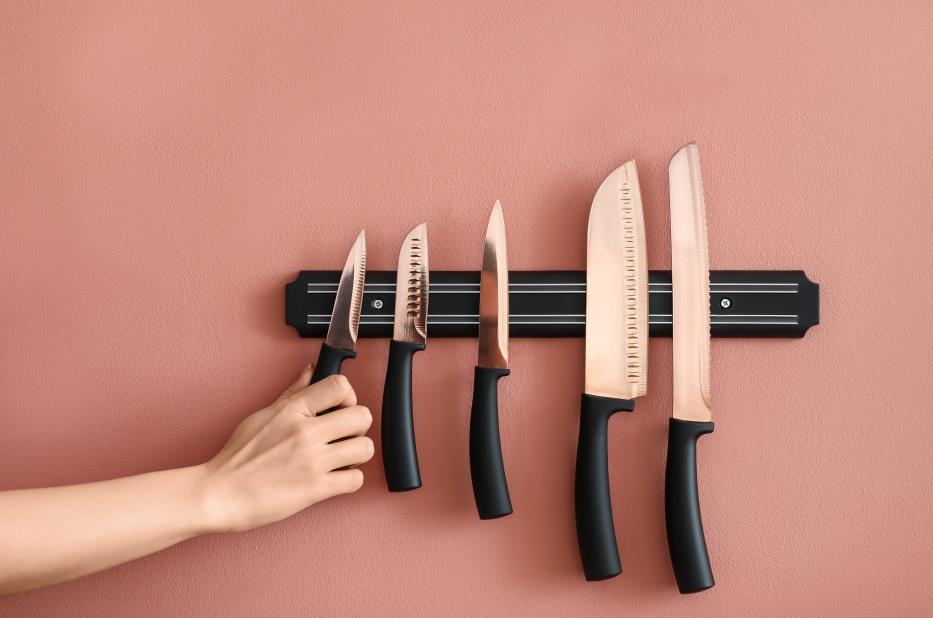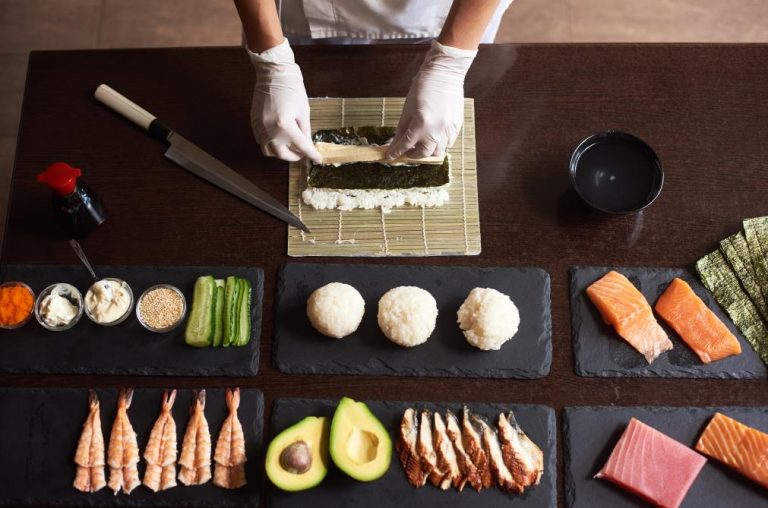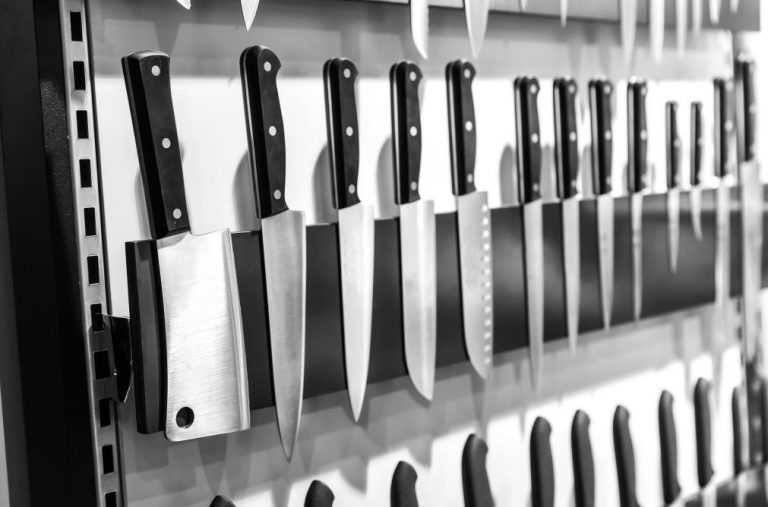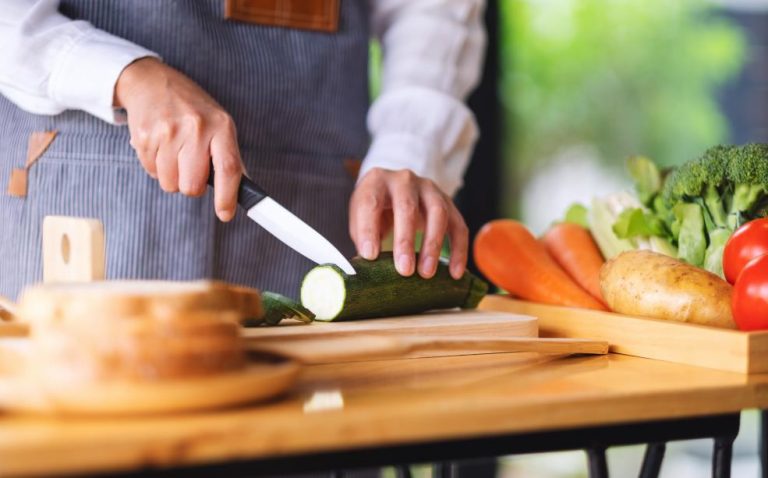No matter our culinary background, a quality kitchen knife is an indispensable tool. But not all types of kitchen knives are made equal.
As a knife dealer, you bear a responsibility. Your success depends on being able to bring the perfect knife before a client that is looking for it.
This is why we put together this handy guide, which takes you from zero to hero in the same amount of time you’d need to sharpen a blade.
Before we start, it’s worth mentioning that this article refers to Western-style kitchen knives. So if you’re interested in Japanese knives, please head this way.
Parts of a kitchen knife
To understand the design subtleties that allow us to differentiate between all types of kitchen knives, it’s crucial to learn about the anatomy of these tools.
The parts of a kitchen knife might bear different names across the globe, but their essence remains unchanged. Of course, depending on their construction, some knife types might skip some of these elements altogether.
Yet, no matter where they come from, kitchen knives will feature some, if not all, of these components.
- Point: The highest part of the knife. Where the spine and edge come together to form an apex meeting point. Chefs use the part to poke through ingredients.
- Tip: The tip lays below the point. It’s the blade section that was utilized to make delicate and fine cuts.
- Edge: Probably the most important part of the blade. The edge makes contact with food and tear ingredients apart.
- Spine: Spine is the dull part of the blade that runs from handle to tip. Chefs often use the part to crush garlic or apply force while cutting dense ingredients.
- Bolster: A bolster is a finger guard protecting your hand from the sharp edge. Western knives like to incorporate this feature to their knife design.
- Tang: Understand tang as a bridge that connects handle and blade.
- Handle: The gripping section for the cooks.
We wrote a detailed knife anatomy to explain each parts of a kitchen knife. Check out this article if you are keen to learn more.
Buy Wholesale Knives and Start Scaling up with Us Today
Contact us and connect with a sales rep to get a free quote.
Essential kitchen knives
Chef’s knife
It is widely agreed that a chef’s knife is the one tool that can’t miss in any kitchen. The original multi-purpose, this knife is meant to be used daily on a variety of prepping tasks. What sets it apart from other essentials is its versatility.
A chef’s knife should be used effortlessly for cutting meat, chopping and dicing vegetables and nuts, slicing fruit, or chopping herbs.
Generally 8 to 10 inches long, this knife features a wide blade and a prominent curve that lends itself very well to rock chopping. The sharp point is helpful for piercing and scoring, while the generous flat side can be used for crushing garlic or as a bench scraper.
Learn more about chef’s knife:
Chinese cleaver
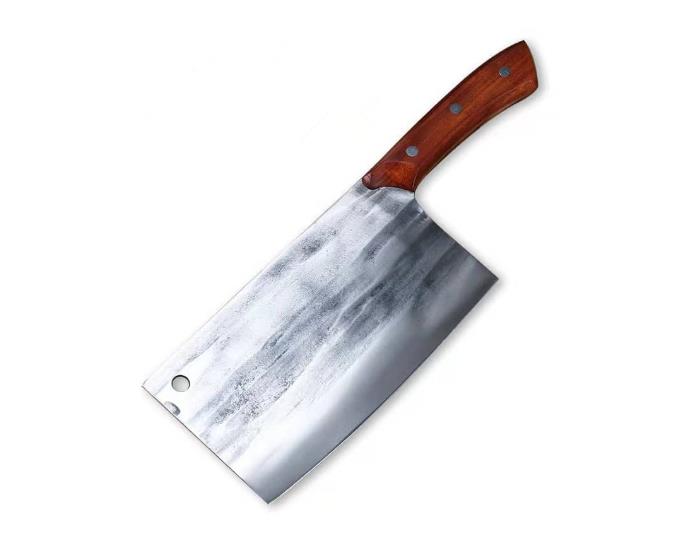
Sometimes called a vegetable cleaver or cao dai, the Chinese cleaver is often misused. Although it looks similar to a meat cleaver, the two are different and should not be used interchangeably.
In Chinese culture, a single knife is used for all kitchen tasks, which is why this knife is sometimes called the Chinese chef’s knife. It is typically 6 to 9 inches long and 3 to 5 inches tall and has a thin, 2-8 millimeters blade.
They are crafted to slice, dice, and mince fruit, vegetables, and boneless meat, but their blade is too thin to be used on bones.
The wide, rectangular blade can improve a cook’s efficiency as it can be used as a bench scraper to scoop up prepped ingredients and transport them from the cutting board directly into the pot.
Learn more about Chinese cleaver:
Paring knife

A paring knife is the young brother of the chef’s knife. They are very similar in shape, the only difference being their size. A paring knife’s blade measures between 2 ½ and 4 inches, making it the perfect tool for tasks where a chef’s knife is a bit of an overkill.
Its small, short blade can be used for intricate cutting, peeling, mincing, and dicing small fruit and vegetables, scoring meat, or deveining shrimp.
A chef’s knife would be too cumbersome for some of the delicate, detailed work in the kitchen, such as trimming ribs from peppers or hulling strawberries. This is where the paring knife comes in, making it easy for dads around the world to peel apples in long, curly strips.
Learn more about paring knife:
Utility knife
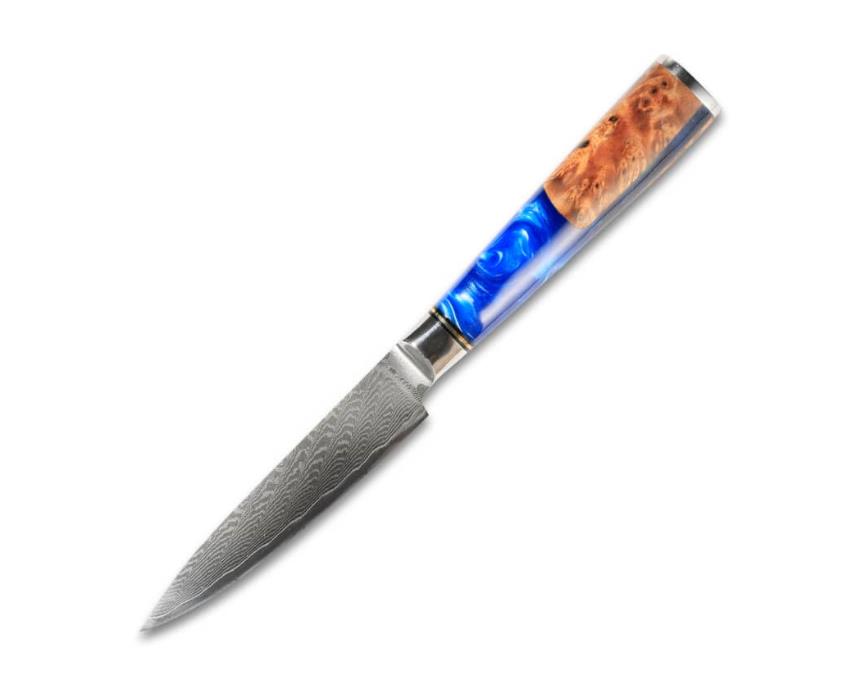
If a chef’s knife is the oldest brother and a paring knife is the youngest, the utility knife would be the second-born. Ranging from 4 to 9 inches, this knife will pick up those tasks that are too tough for a paring knife yet still don’t require the full power of a chef knife.
It excels at chopping medium-sized vegetables like carrots and potatoes, slicing and portioning deli meats or steaks, or prepping fruit for smoothies or baked goods.
Learn more about utility knife:
When comparing it to a paring knife, you’ll notice that a utility knife is much more versatile. Cooks often use it with smaller hands or issues like arthritis instead of a chef’s knife, and it performs well for most kitchen tasks, granted they don’t require a lot of force.
Learn more about utility knife vs. paring knife:
Bread knife
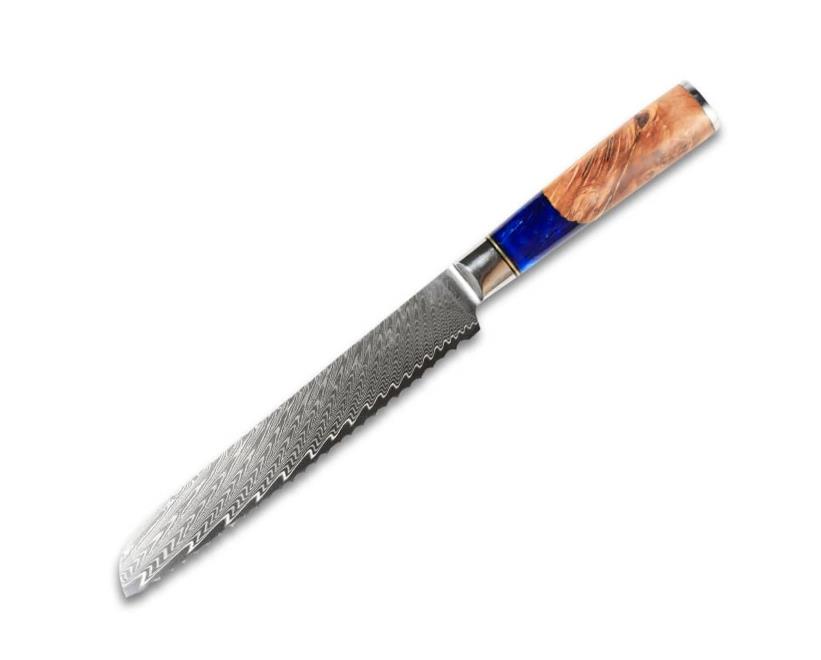
Unlike the other knives discussed so far, you’ll find most of the information you need about a bread knife’s uses right in its name. Bread knives feature long, narrow blades that are entirely straight, with wavy or serrated edges.
This design allows cooks to slice through bread or baked goods without applying much pressure not to rip the bread apart. The same principle applies to soft vegetables or fruit, such as tomatoes or citrus.
A bread knife can also be used for leveling cake or slicing deli meats and cheese. The bread knife is a great pick if an ingredient needs a soft touch.
Learn more about bread knife:
Butcher knives
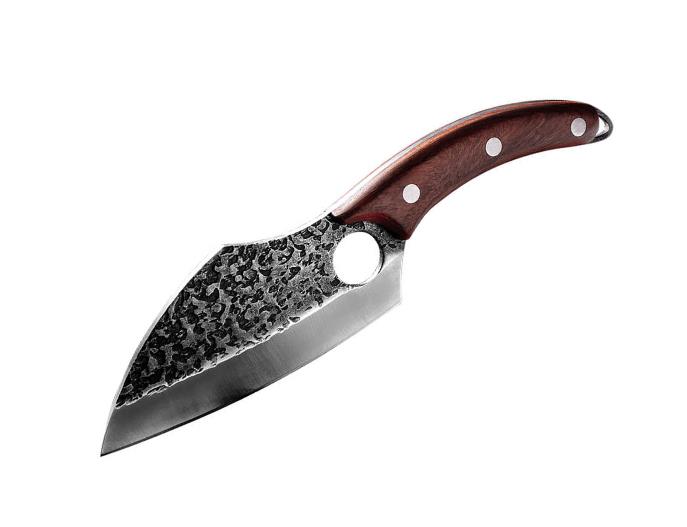
Butcher knives come in many shapes and sizes but share the same general purpose. They are larger, heftier knives that can handle the toughest ingredients in the kitchen – dense, raw meats and bones.
They are bigger than ordinary chef knives, and their blades are heavier, allowing the cook to use more pressure and power through meat, ligament, cartilage, and bone.
In the right hand, a butcher knife will quickly break down animals into smaller portions, ready to be cooked.
Learn more about butcher knives:
Traditional butcher knives
Traditional butcher knives can look pretty menacing, so it’s great that they are typically only found in butcher shops and restaurants.
They range between 6 to 14 inches and feature a curved cutting belly with a broad tip that ends into a very sharp point. The lengthy edge makes it easy for cooks to slice through meat in long motions instead of sawing away at it.
A good butcher knife can be used for portioning large cuts of meat, trimming excess fat, or skinning and deboning large animals.
A good rule of thumb is that if a cook is faced with a whole animal carcass, a butcher knife is what they’ll be looking for first.
Meat cleaver

Meat cleavers are heavy-duty tools with thick, rectangular blades, about 7 to 9 inches long. They are designed to sustain a lot of pressure from quick, powerful hits.
Far from suitable for the intricate tasks of fine dining, a meat cleaver is used for chopping meat and cutting through bone. Faced with a whole chicken, a cook will reach for the meat cleaver and finish its disassembly in record time. And they will probably have a lot of fun doing it, too.
Buy Wholesale Knives and Start Scaling up with Us Today
Contact us and connect with a sales rep to get a free quote.
This is probably why people started using it for various other tasks, such as chopping through dense vegetables like butternut and squash. Some cooks use it to crush garlic and ginger or even crack coconuts.
Learn more about the meat cleaver:
Boning knife
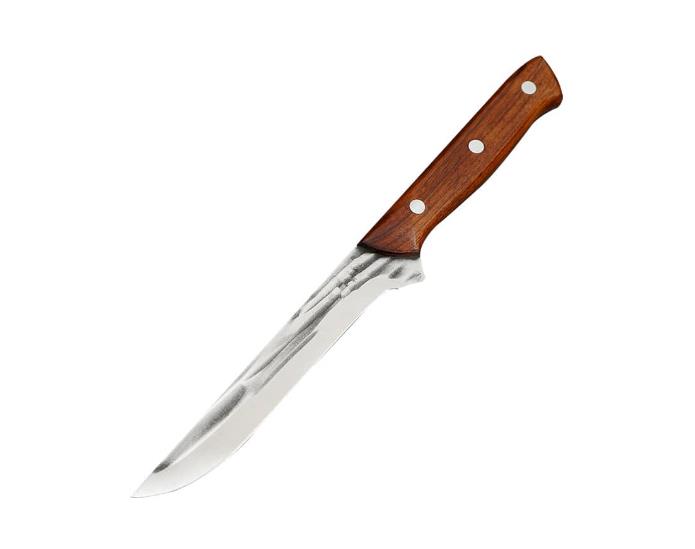
As the name suggests, a boning knife is the first pick for separating meat from the bone. Its blade is long and narrow, typically between 5 and 6 ½ inches, with a slightly curved tip ending in a sharp point.
It excels at breaking down poultry or larger pieces of meat into steaks. The fine point allows the cook to pierce through sinew and cartilage, while the long, straight blade makes it easy to slice meat in single strokes.
A boning knife doesn’t quite like labels, though. It does an equally great job at peeling and slicing fruit and vegetables or trimming cake.
Learn more about boning knife:
Fillet knife
Often misunderstood, fillet knives come in a broad range of sizes. Depending on the cook’s needs, they can be anywhere between 4 to 11 inches. When it comes to their design, they are very similar to boning knives. Their blade is long and narrow, the main difference being their flexibility.
A fillet knife’s blade is much more malleable, allowing for more intricate work. This is why these knives are best suited for cleaning, deboning, and filleting fish.
The flexible blades and sharp points allow cooks to work around the delicate meat of fish without damaging it.
Learn more about fillet knife:
We’d need a lot more time to compare boning and fillet knives properly, but you should know that they can’t be used interchangeably.
A boning knife can be used for fish in a pinch, but it does not guarantee a perfectly aesthetic result. However, the flexible blade on a fillet knife makes it dangerous to use for most other purposes.
Learn more about boning knife vs. fillet knife:
Carving knife
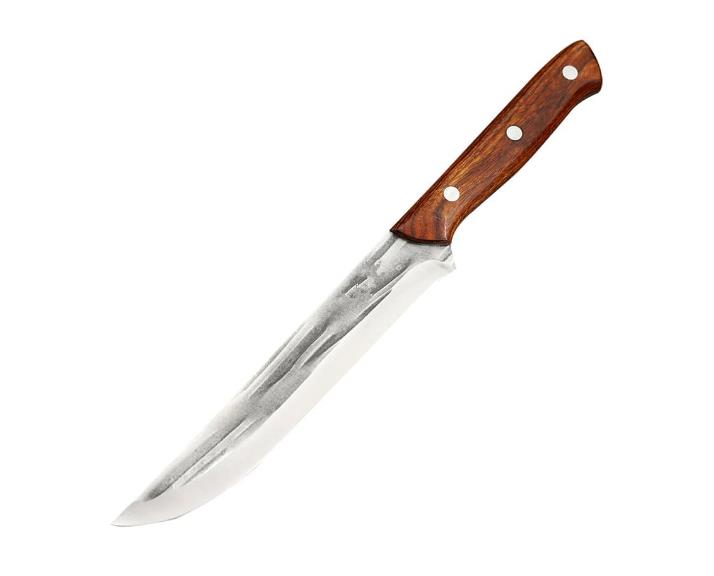
Family holidays are where a carving knife can shine. With a straight narrow blade that ends at a sharp point, this knife is specialized for carving roasts and poultry.
The blade length stands between 8 and 12 inches, allowing cooks to slice those perfect pieces of roast worthy of someone’s Instagram feed.
Learn more about carving knife:
The knife’s rigid blade and thickness (3.5 to 4.5 mm) underpin even slicing but also lend themselves well for easier butchering jobs such as portioning poultry.
Due to its versatility, many compare the carving knife to the traditional chef’s knife. There’s some depth to this issue, but one of the key differences is the blade’s height. A chef’s knife is generally taller, which leads to food sticking to the blade.
Learn more about carving knife vs. chef knife:
Slicing knife
Speaking of slicing food, there’s one specific knife that excels at this task. A slicing knife features a long, straight narrow blade, between 8 and 14 inches.
Many have a dull, rounded end, although pointed slicing knives can also be found easily. A key aspect of their design lies in the many indents across the blade’s length.
This feature prevents slices from sticking together, allowing for a cleaner result. Whenever presentation matters, a slicing knife will be appreciated.
Learn more about slicing knife:
It can be used for slicing and dicing vegetables and fruit for casseroles, salads, pies, or hams, roasts, and deli meats. On-the-go sandwiches or intricate charcuterie boards are perfect candidates for this tool.
If you’re not sure how it differs from a carving knife, you’ll find the full explanation in our comparison article.
Learn more about slicing knife vs. carving knife:
Special kitchen knives
Steak knife
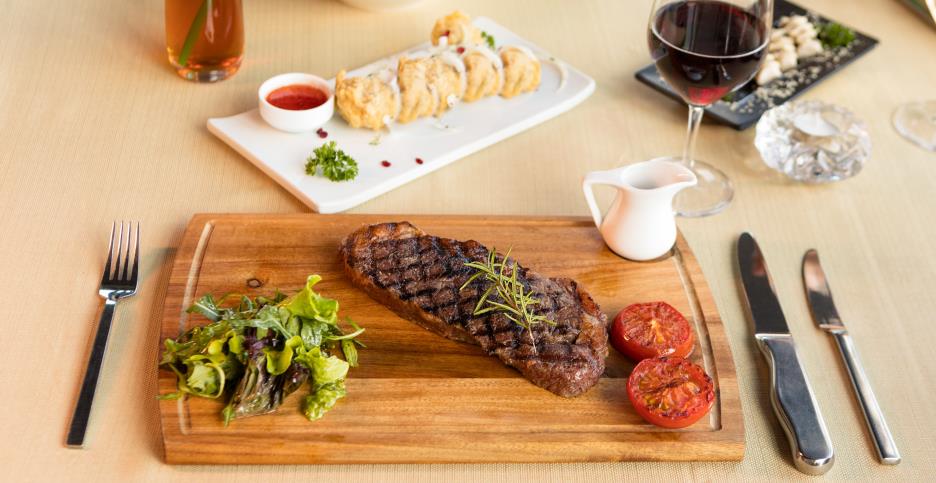
If you’ve been in the knife business for a while, we’ll spare you the story of King Louis XIV’s vendetta against the steak knife. And if you weren’t born a vegetarian, you’ve probably used one of those before.
A steak knife is a table knife used for slicing and dicing perfectly cooked meat into bite sizes. They have thin, stiff blades, typically serrated, and can’t be used for prepping jobs.
One of the most important features of a steak knife is its grip. Quality knives allow the highest degree of control and a firm grip. This is why buyers will look at the handle above anything else when shopping for steak knives.
Many customers will hit a roadblock when deciding between a straight and a serrated edge for their steak knives. The main difference is that serrated edges require less pressure when cutting. If you’d like to explore this matter in more detail, you’ll love this comparison article.
Learn more about steak knife:
Tourné knife
A lesser-known specialty tool is the small Tourné knife. Its name comes from the sophisticated-sounding French technique, the Tournée cut. That’s nothing more than peeling small vegetables as you rotate them in your hand, creating an oblong football shape.
As expected, the Tourné knife is the perfect tool for the job. It features a small blade, between 2 and 3 inches long, with a cutting edge slightly curved inwards. It ends at a sharp point, slightly resembling a beak.
This shape makes it very efficient at peeling small veggies and fruit, but it can also be used for coring tomatoes and strawberries or digging the eyes out of potatoes.
Learn more about Tourné knife:
Western kitchen knives vs. Japanese kitchen knives
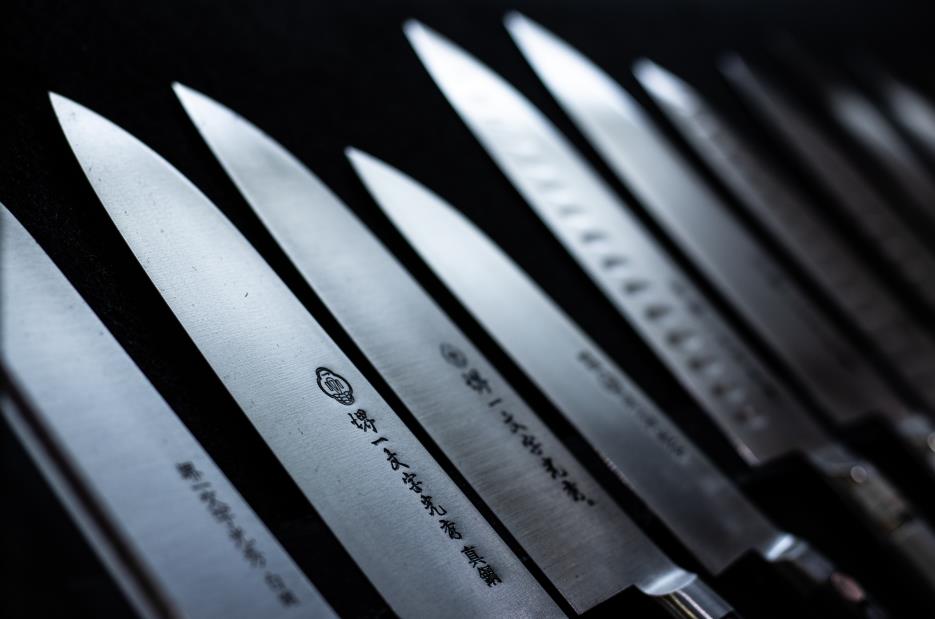
When discussing the history of kitchen knives, two cities stand out as the knife capitals of the world – Solingen, Germany, and Seki, Japan. This is why Western kitchen knives are also called German-style knives.
For us to enjoy the modern kitchen tools we have today, these two parts of the globe had to adjust their manufacturing processes to varied cuisines and cooking styles.
Although there’s much debate over which type of knife is the best, the seasoned cook understands that both Western and Japanese knives have their place in the kitchen and are best suited for different tasks.
Western knives are hefty and feature thicker blades, as well as a more prominent curve that lends itself well for rock chopping. They are specifically designed to handle laborious tasks such as chopping, dicing, and hacking away at harder, denser ingredients.
Their weight and versatility make them prime choices for the cook who needs to be efficient and versatile, sacrificing a degree of precision.
On the other hand, Japanese-style knives commonly feature lightweight, thin and straighter blades, which are great for the more delicate tasks around the kitchen.
One caveat about these lighter blades is that they also require more maintenance. This is why they are often preferred by cooks who don’t mind spending extra time on sharpening, even weekly.
What type of knives should you sell in your store?
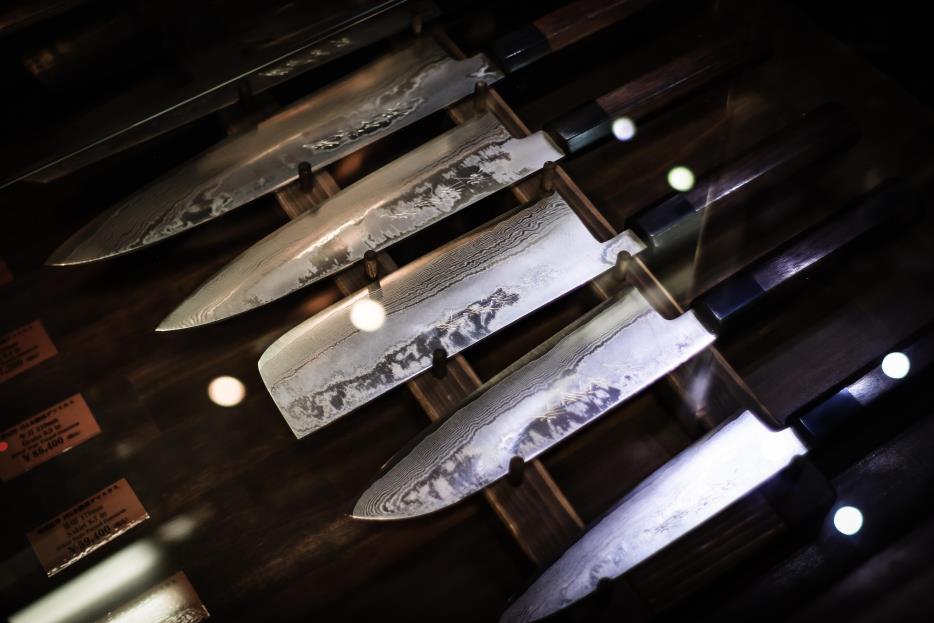
Depending on your target audience, you’ll want to hone your marketing efforts on a few types of kitchen knives. Of course, many factors dictate whether a knife will sell well, including its size, blade material, or construction.
Yet, you can spare yourself some time and headaches by roughly matching the most common styles of kitchen knives with the type of customer that frequents your shop.
Buyers who need to equip a kitchen or replace a staple quickly will want a tool that’s efficient, multi-purpose, and does not require a Ph.D. to maintain.
Buy Wholesale Knives and Start Scaling up with Us Today
Contact us and connect with a sales rep to get a free quote.
If they are your primary audience, you’ll be successful by sticking with the basics. A couple of quality chef knives will always be in high demand.
Likewise, these customers will benefit the most from a paring knife, a deboning knife, and a knife with a serrated edge, such as a bread knife or carving knife.
If your shop welcomes more professionals than home cooks, you might want to include some specialty tools, such as butcher knives and meat cleavers, fillet, or Tourné knives.
Buy your customers some time by selling knife sets
Many buyers will appreciate a carefully put-together knife set. Having the essentials sold as a bundle will save them time and the headaches that come with research.
The backbone of any kitchen knife set is a chef knife, followed by a few essentials. Paring and utility knives make great additions since they cover any possible need a cook might have when preparing common ingredients.
A boning knife and a meat cleaver will handle the more challenging jobs, while a bread knife or slicing knife will take care of anything extra.
You can also put together sets aimed at professionals. For example, a butcher set will attract professional chefs, restaurants, or hunting enthusiasts.
Customers that adopt a vegetarian lifestyle will surely appreciate sets catered towards them, which could include Chinese cleavers, paring and utility knives, and a bread knife.
You can always check our ready-made knife sets if you don’t know what to choose. They are suitable for a broad range of audiences and can be delivered directly to your storefront without hassle.
Takeaway
If we were to explore all of the different types of knives known to man, we’d need a lot more time than we have available. Not in this specific article, but on Earth.
Nevertheless, with this guide, we hope you get a satisfactory bird’s eye view of this essential kitchen niche. Make sure to check any of the articles we’ve linked if you need in-depth explanations on any specific type of knife.
And if you’re looking to add any of them to your inventory, we’re ready to guide you through the entire process. And do most of the heavy lifting for you. We’re serious; we love a challenge. All you have to do is request a quote.
